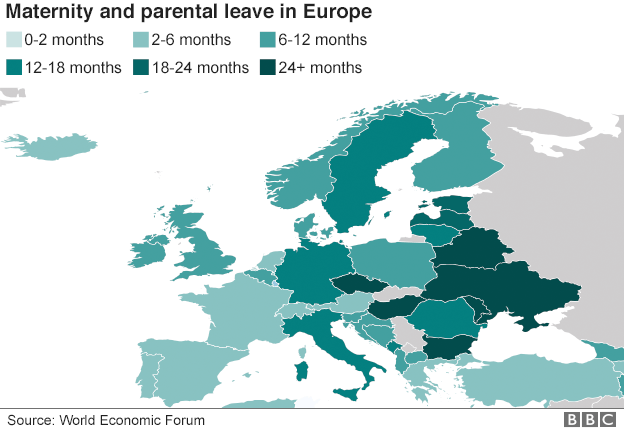Women work 39 days a year more than men, report says
- Published

Women work on average 39 more days a year than men according to the World Economic Forum.
Women work on average 50 minutes more a day than men, data from the WEF's Global Gender Gap report suggests.
The report says the prevalence of unpaid work burdens women and estimates that economic inequalities between the sexes could take 170 years to close.
The gap in economic opportunity, the WEF says, is now larger than at any point since 2008.
Nearly a quarter of a billion women have entered the global workforce over the past decade, the report says.
Although men do 34% more paid work than women, women still spend more of their time on unpaid work such as housework, childcare and care for older people.
When this is factored in, the WEF calculates women work more than a month more than men per year.

In India, Portugal and Estonia, this equates to more than 50 days more work for women than men per year.
In the UK women work nearly 12 days more than men.
In only six countries do men work more hours than women, but notably three of these are Nordic countries where parental leave can be shared relatively evenly between men and women.
Shared parental leave is strongly associated with women's economic participation in many parts of the world.
Vesselina Ratcheva, a data analyst at the WEF, told the BBC: "Shared parental leave can be good because it allows families to plan their lives, to fit having children in with their careers and to share responsibilities."
Paid leave for mothers greatly outweighs paid leave for fathers, and on the whole governments are more likely to shoulder the cost of maternity leave than paternity leave.
There is also a limit to the positive effects of extra parental leave.
In countries where paid parental and maternity leave exceeds two years, as it does in many Eastern European countries, women are less likely to participate in the labour force.

Some economists suggest that investing in the currently unpaid workers who constitute the caring economy could contribute to economic growth.
The International Trade Union Confederation estimates that if 2% of a country's GDP was invested in its care sector, employment would increase from 2.4% to 6.1%, depending on the country.
This would equate to nearly 13 million new jobs in the United States, 3.5 million in Japan and 1.5 million in the United Kingdom.